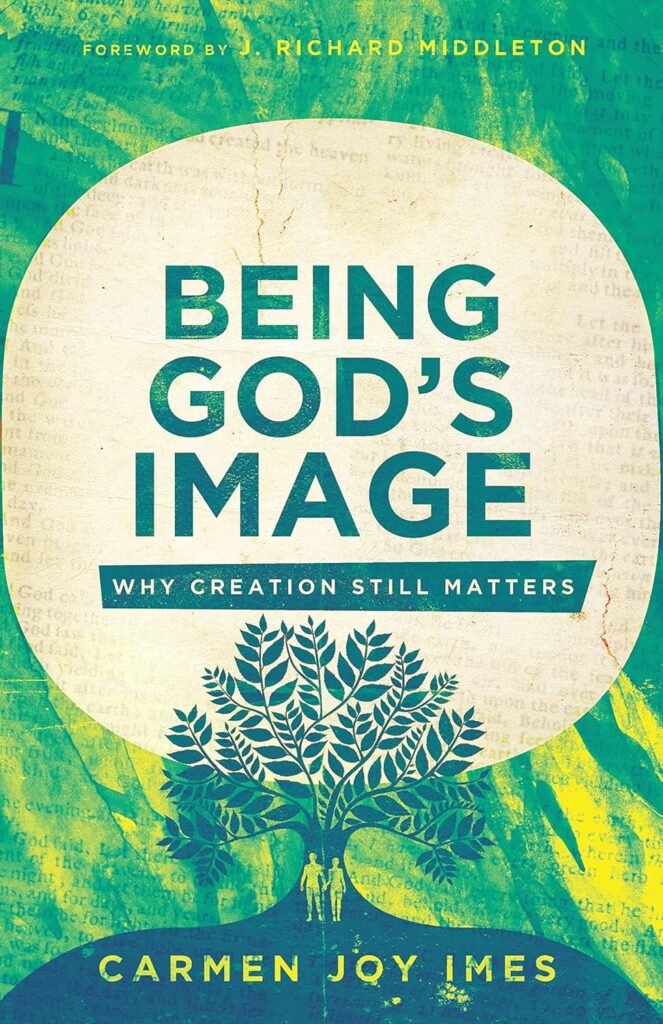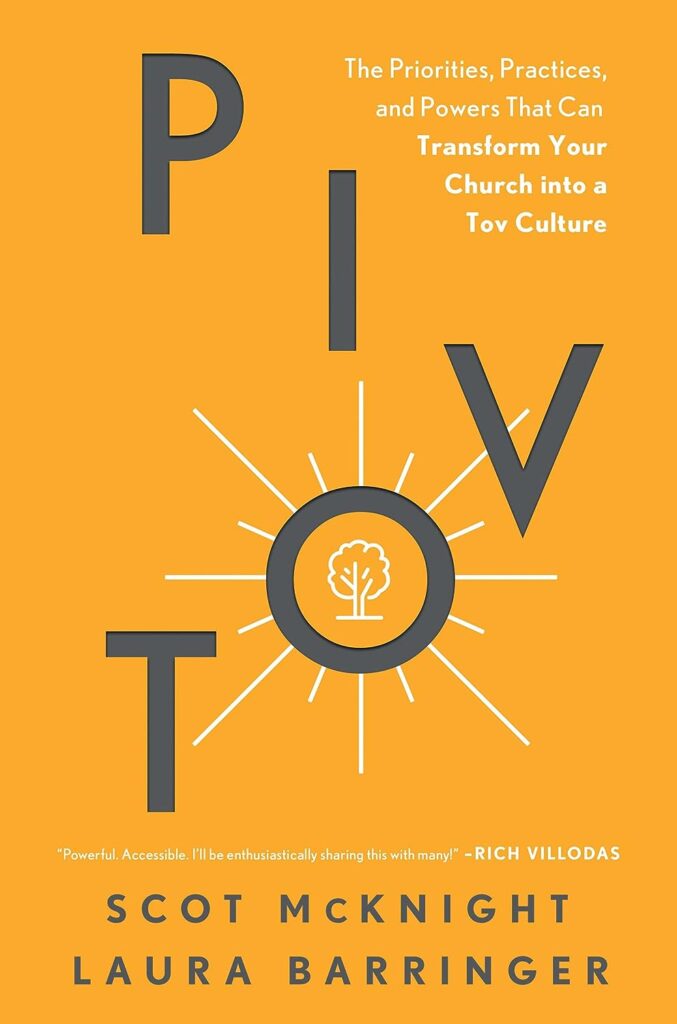
C.S. Lewis writes in A Preface to Paradise Lost that “the first qualification for judging any piece of workmanship from a corkscrew to a cathedral is to know what it is—what it was intended to do and how it is meant to be used.” We do well therefore, to go back and carefully read the “In the beginning” of Genesis 1 and 2. I feel we commit a fatal error when we hastily read through the beginning words of Scripture. And we commit an even greater mistake when we read them through the lens of modern day science instead of the poetic narrative in which they are written. Thankfully, Carmen Joy Imes, in her book Being God’s Image: Why Creation Matters, pulls us back to the creation story so that we can live accordingly in the now of today in preparation for the new creation to come.
It doesn’t take a Ph.D. for one to experience the reality that we as humanity have an identity problem. Even church folk struggle. True, we as Christ-followers are told we are created in the image of God, but what does that mean? Personally, I’m not sure I really became aware of all the ramifications of the Imago Dei until a few years ago. Who knows why it escaped me? Even as one who has a couple of seminary degrees, this most important theological truth was never given an opportunity to take root.
Today, I have a much better grasp of what it means to be in the image of God. But perhaps if Imess’s most accessible book were available “back in the day,” I might have understood sooner that we as male and female are created for relationship with God and each other to reflect God’s glory as we work toward making this earth as it is in Heaven. Did you notice the word “work?” Yes, we have jobs! And it’s an important part of being in God’s image. Imes writes, “From the beginning, our human vocation had to do with the cultivation and care of creation, making the rest of the earth like Eden. We neglect [this] to our own peril, and that of our children” (38).
Imes doesn’t just spend all her words on exegeting Genesis 1 and 2, however. These beginning verses in Genesis serve as the launching pad for her entire book. She begins by walking her readers through the Bible story to show how being in God’s image manifests itself throughout Scripture. From Genesis 3, where sin enters the scene yet “humanity retains its identity as God’s image in spite of rebellion and punishment” (66), to Revelation, where all creation is restored and we are once again set right to rule and steward the creation in holiness, being God’s image is at the core.
Several things stand out to me about Being God’s Image. First, Imes is an Old Testament scholar. This means that her work is full of nuggets of Biblical exegesis that are there for the mining. For example, in chapter 6, Imes has an excursus on Ecclesiastes on whether life is really meaningless as implied by its beginning verses. Naturally life has meaning, so what is the teacher in Ecclesiastes trying to say? For Imes, there exists a better translation for the word “meaningless.” She contends that it should be interpreted as “vapor.” In that understanding, it’s not that life does not have meaning, it is just beyond our grasp to understand. She writes that it’s like the man who wants to retire at fifty and so he worked all the overtime he could while his children were young only to see them leave when he retired. That’s vapor. “When our eyes are always on the future, we miss the joy that’s right under our nose,” writes Imes (98).
Another thing that grabbed my attention in Imes’s book is the subtitle: Why Creation Still Matters. Though the idea of the importance of creation exists throughout, it’s the final chapter in which she puts an exclamation point on the subject. In reading it, I very much resonated with her experiences concerning the rapture. I too grew up with the idea that Jesus is going to rescue his followers from this sinking ship we call earth before it is utterly destroyed. But this is a dangerous belief according to Imes. “If I believe my destiny is elsewhere,” she writes, “why invest in this planet’s long term health? Why spend time building businesses and schools and societies here? Why create anything at all? Why not just wait things out?” (169) The truth is that God is not abandoning his creation. As already mentioned, our work in making this earth as it is in Heaven is vital to our being in God’s image. This is true for the present and the future.
And finally, I found what Imes writes of Jesus regarding the image of God to be of utmost and profound importance. She writes: “Jesus is not the image of God because he is God. Jesus is the image of God because he is human.” In other words, “Jesus is and does what humans were meant to be and do” (110). If you want to know what it looks like to live in the image of God, look to Jesus. Consider how he performs acts of justice for those who have no voice. Consider how he brings healing to those on the margins. And consider how he selflessly gives of himself in love.
Being God’s Image: Why Creation Still Matters is a book of good news. Imes desires for her readers to dive deep into understanding and embracing a life lived in the image of God. To do so is to find purpose, identity and joy. But this book is also a book of challenges. It will cause you to ask how you see and treat those different from you. It will push you to act upon the truth that all people, regardless of race or disability or sex are created in the image of God. And it will make you think about how we steward the creation that God made and gave to us so that it flourishes.
I hope many pick up a copy of this book and digest its contents. No doubt for some it will challenge long held interpretations of Scripture, but such interpretations need to be challenged. We need to be awakened to understand work, recreation, rest, worship, ministry and mission all through the lens of being created in the image of God. Thankfully Imes helps us to do so as she proclaims that “this world is not a failed experiment or a temporary staging ground for eternity. God called the world very good. In the midst of our suffering and disillusionment, God invited us to pray honestly, to let go of our own need to understand everything, to trust him, and to learn to enjoy the journey” (184).
This first appeared at The Englewood Review of Books
Leave a Comment